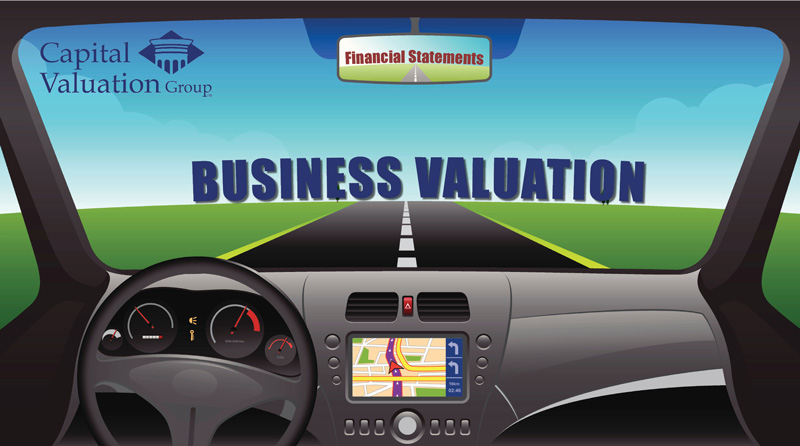
Can you imagine driving your car by relying on your rearview mirror instead of your windshield? It would be hard to keep driving in the right direction.
If we relate that to business, a company’s financial statements represent looking in the rearview mirror because they report what has occurred in the past. On the other hand, the business valuation process is like looking out the windshield because it models what is expected in the business’s future. Why are both views important to business owners and their advisors?
First, let’s take a look in the rearview mirror. Financial statements are intended to help a business owner understand where the company has been. It is important to review these historical figures and trends because it provides information about how well the business has historically utilized the company’s assets to generate profitability and cash flows. Financial statements are not, however, the end-all for arriving at the value of a business.
Back to our car analogy, for business value we need to focus our attention on looking out the windshield, because it is this view that allows us to see where the business is headed, not just what’s already been achieved. Business valuation, when done accurately, identifies the company’s capacity to produce future benefits. This is about defining and modeling the business owner’s business plan going forward and the business’s capacity to achieve that plan.
Capacity cannot be measured by applying a multiple to a number on a financial statement because it assumes the company’s financial performance will be unchanged every year into perpetuity. This “math” results in a misunderstood assumption that there is no change in the company’s financial performance...ever. Can you name one business that fits this description? After 46 years of valuing privately owned businesses, neither can we.
Business Valuation includes modeling the subject company’s business plan so capacity for change—growth and/or decline--is included in the assumptions. Working capital and reinvestment are measured, along with significant intangible assets that don’t appear on a financial statement, such as:
- Marketing and distribution systems
- Patents or other intellectual property
- Trained personnel
- Computer programs and databases
- Management systems
You can read more about these qualitative factors that are important to business valuation here.
So in summary, while looking back at financial statements gives you important trends and data to consider, that is only part of the story. It is not how you gain an understanding of the value of your business investment. Don’t get stuck looking in the rearview mirror, instead, always think about your business as an outside buyer would and look out the windshield. A buyer measures the value of an investment by its future return, which depends on modeling where the business is going. Tell the story of where your business is going and the capacity that has been put in place to get it there -- and enjoy the ride!

